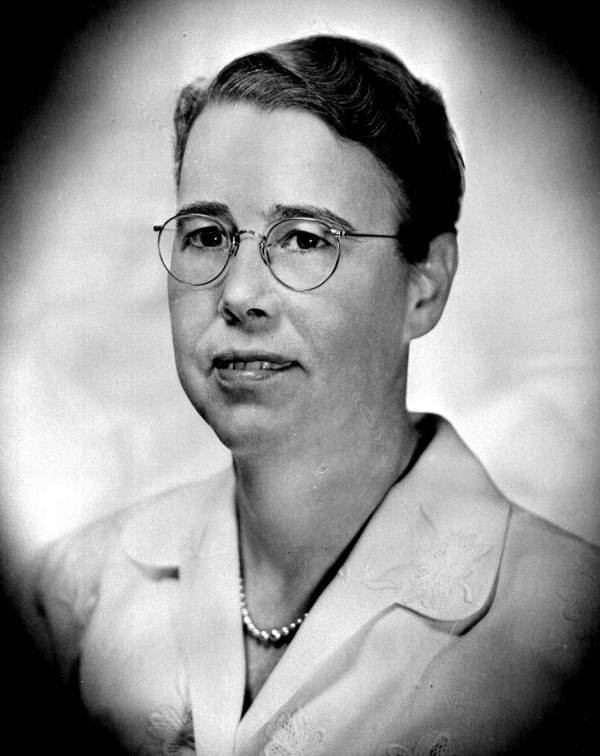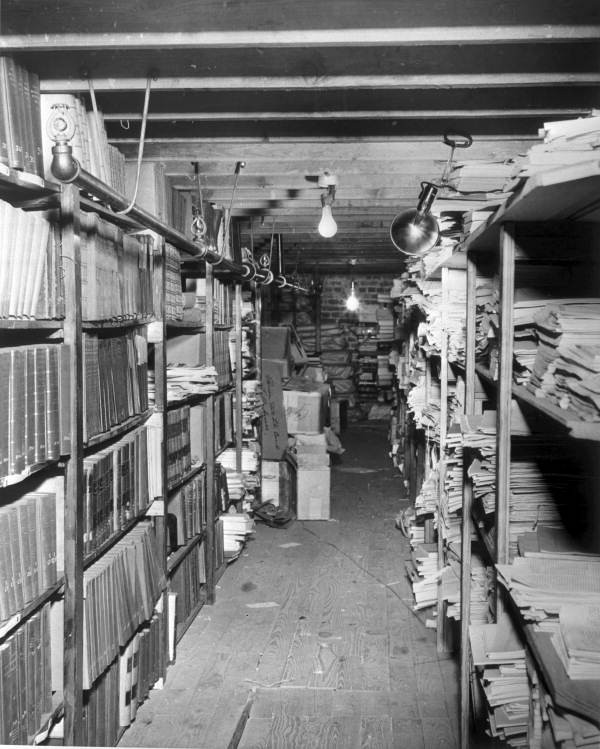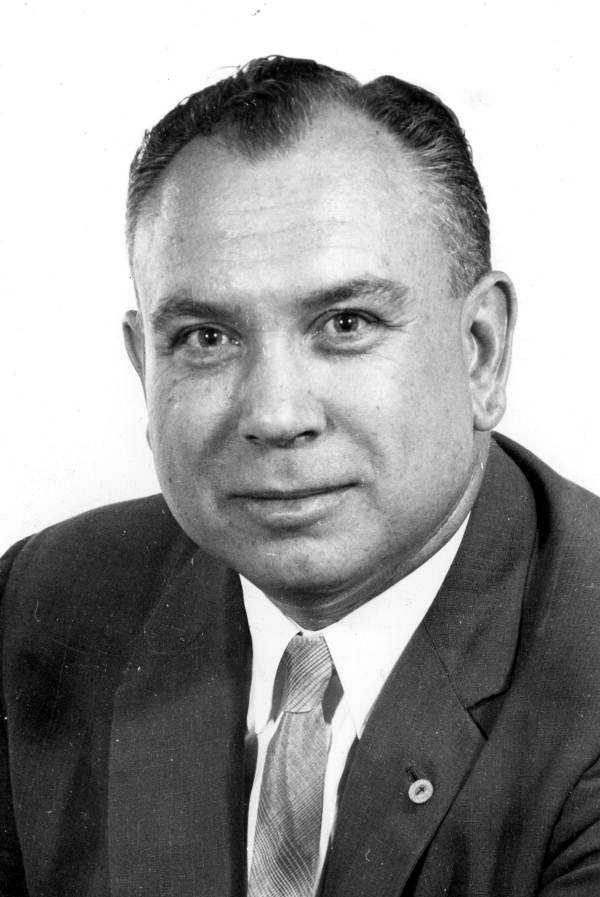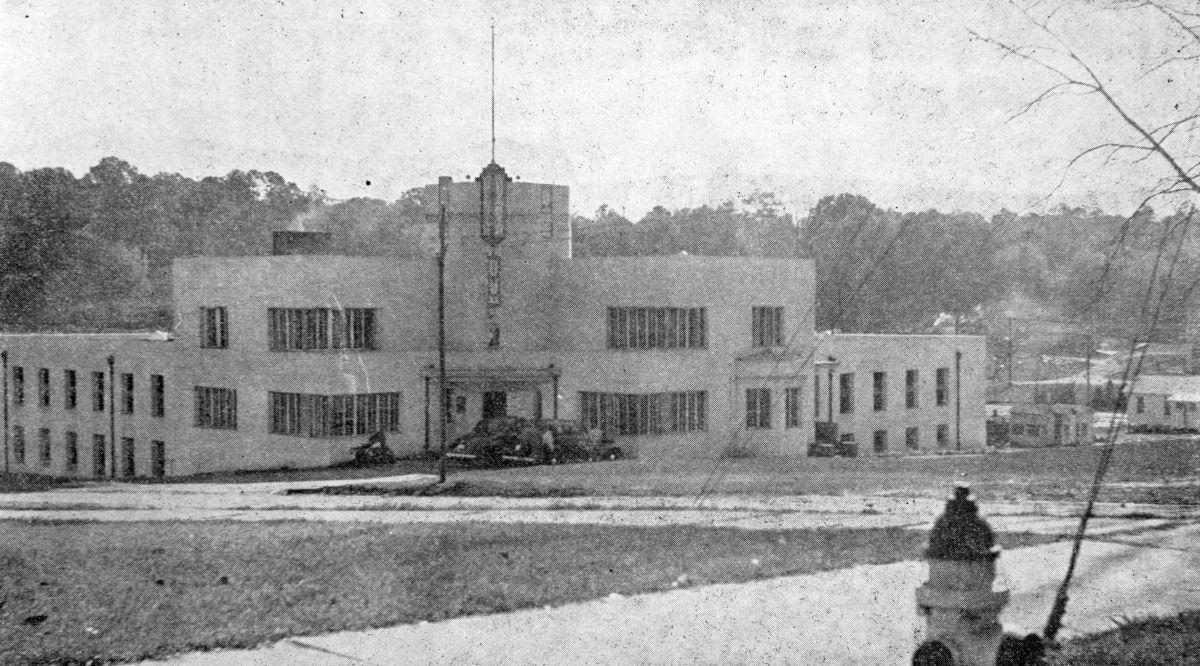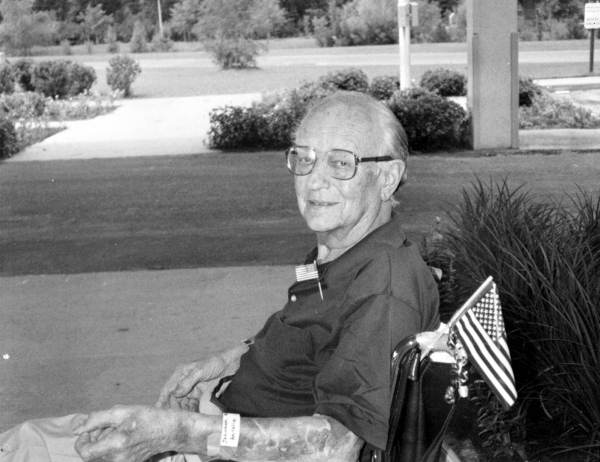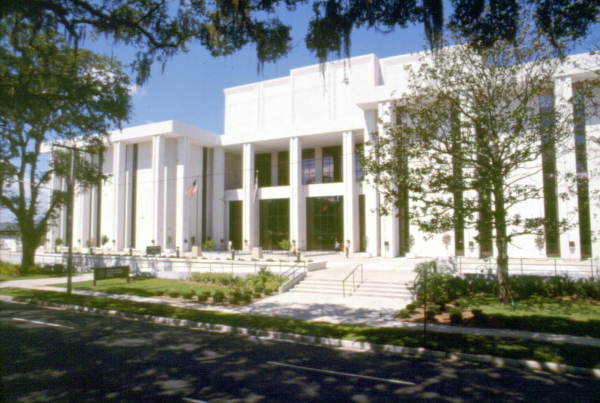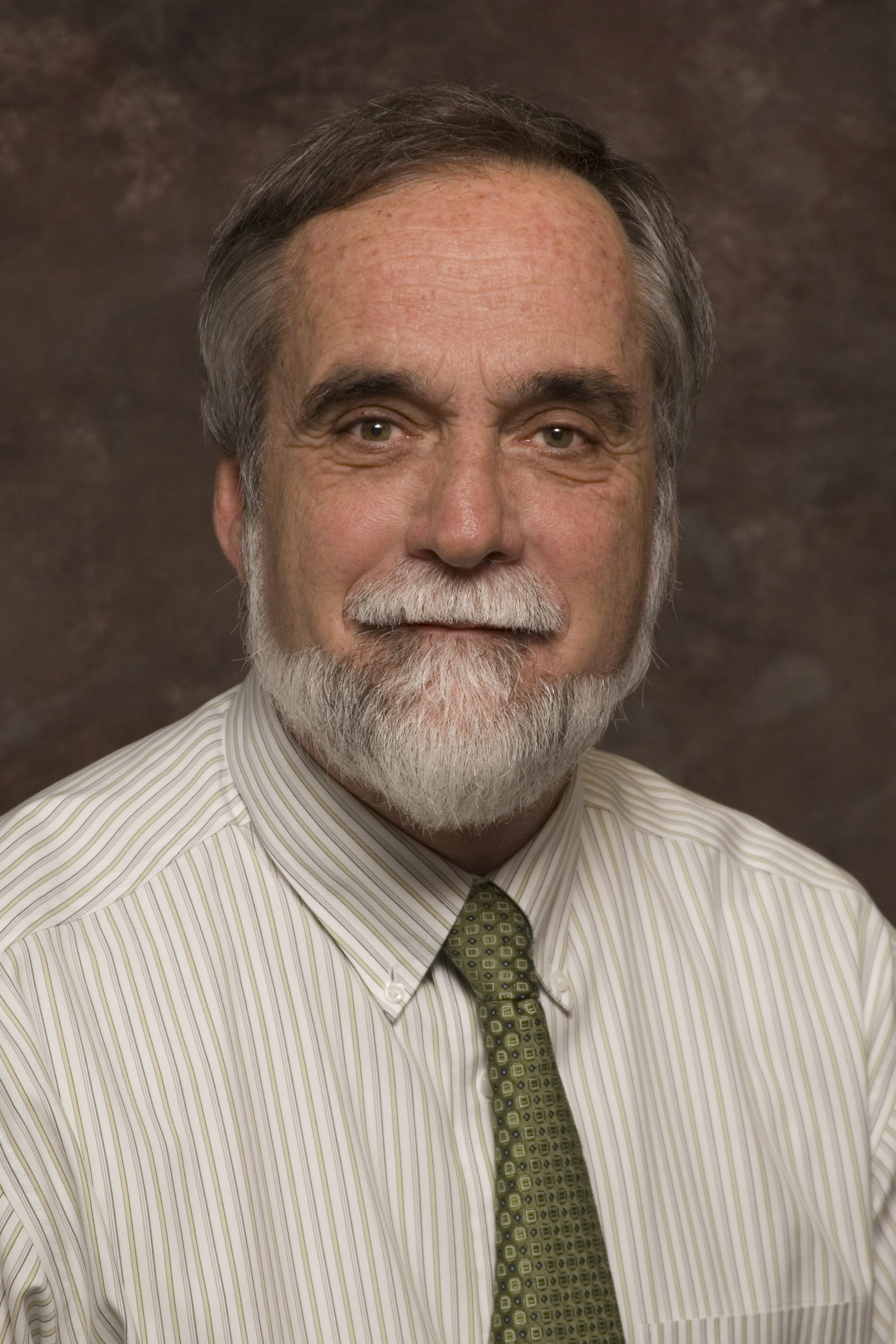Description of previous item
Description of next item
Florida's State Archivists
Since 1822 and even before, the government of Florida has required extensive recordkeeping for effective functioning. In the United States and all around the world, the records of the past are essential to good governance in the present and for the future. Florida’s state government is no exception. So true was this fact that among the very first acts of the territorial legislature was the establishment of two positions in the newly-minted government as what the law called “Keepers of the Spanish Archives.” The law charged these two officers, one in St. Augustine and the other in Pensacola, with caring for the records of the former Spanish government of Florida and to “furnish true and correct copies of any papers or documents in their offices when required.” Even today, researchers frequently call upon some of the records which these archivists preserved. Among the Spanish archives were what are now known as the East Florida Papers, housed at the Library of Congress, and the Spanish Land Grants, which represent some of the earliest description and title documents for certain land in this state.
The dual Keepers of the Spanish Archives were abolished in 1848, just a few years into Florida’s statehood. Even before the development of archives as a field of professionals, these officials represented the first of many individuals to serve Florida in this capacity. Florida would not have another dedicated keeper for its historical records until 1941. In the meantime, the major part of the Spanish archives went to the Florida Surveyor General’s office.
Outside of the Spanish archives, there were numerous important kinds of records being generated by Florida’s government. When Florida became a state in 1845, the very first act of the new state legislature gave the Secretary of State responsibility for keeping these records (Ch. 1, Laws of Fla. 1845). Initially, care of the state’s papers was the direct responsibility of the Secretary and their staff in the Old Capitol Building. The next major development for Florida’s historical records came in 1925, with the establishment of the State Library of Florida in the State Capitol (Ch. 10278, Laws of Fla. 1925). Finally, there was a single official repository for records like these. Initially the staff of the State Library was very small, but the institution began to grow quickly.
In 1941, State Librarian W.T. Cash hired Dr. Dorothy Dodd to be Florida’s first State Archivist. Dr. Dodd was a longtime resident of Tallahassee, and she brought extensive experience and education to the State Library. Dr. Dodd held a PhD in History from the University of Chicago and studied journalism at Columbia University. She also held bachelor’s and master’s degrees from the Florida State College for Women. Before becoming Florida’s State Archivist, Dr. Dodd had worked on the Works Progress Administration’s historical records survey in Florida and would have been very familiar with the documents in her charge. While Cash’s decision to hire her represented a major development for Florida’s archives, Dr. Dodd worked alone. She was the State Archivist by title, but she was also the only archivist working for the state at all. Dr. Dodd made huge contributions to Florida’s archival holdings, often by the simple act of saving historic records from outright destruction. She was also known for editing numerous historical texts about the state and collaborated closely with Clerk of the Florida House, Allen Morris, in researching and writing his essential “Florida Handbook.”
Dr. Dodd became State Librarian in 1951, and while nobody else filled the State Archivist position, she continued to do her best to save the state’s historical records. Still, by the time she retired in 1965, the state’s many decades without a dedicated archival institution were beginning to show. Dodd could only do so much, and most of the government’s records languished in basement rooms in the Old Capitol and Florida Supreme Court buildings. However, by 1965, the legislature was considering steps to create a dedicated agency for all of Florida’s historical resources across archives, museums and archaeological sites.
In 1967, the Legislature created the Florida Board of Archives and History (Ch. 67-50, Laws of Fla.) which was authorized to assume all archival functions previously handled by the State Library. Former state legislator Robert Williams became head of this new board. During this time, the State Archives, both as an institution and as a collection, moved into the old Leon County Jail building, just down the hill from the Capitol. Williams himself went on record saying that his duties were those of an administrator and that he was not the State Archivist. However, during the earliest years of the Board’s existence, Williams and a single assistant were the only people working there.
Although Williams may have thought of himself and his work differently, he did the work of the State Archivist by taking many early steps to grow the State Archives of Florida into an institution that was capable of caring for the records in its charge. He was eventually recognized as a Fellow of the Society of American Archivists for his efforts. Notably, Williams was still overseeing the Board when a series of government reorganizations in 1969 created the Division of Archives, History, and Records Management (DAHRM) under the Department of State (Ch. 69-106, Laws of Fla.). During this time, the major task of the State Archives was the creation of a working inventory of all of the state’s historical records. Senator Williams served as Director of DAHRM until 1980. Under his guidance, Florida developed – for the first time – a staff of professional archivists and records management experts. This Division included the direct predecessor to the current Bureau of Archives and Records Management, the chief of which could be called the State Archivist.
The first Chief of the Bureau of Archives and Records Management within the Division of Archives, History and Records Management was Edward N. Johnson, who started in 1970. Johnson assumed many of Robert Williams' archival duties. Under Johnson’s direction, BARM began projects to better organize the state’s archival holdings or even describe them at all. In some cases, records in the old jail building had sat largely unknown since Dorothy Dodd saved them from destruction. Johnson’s prior experience as an archivist for the National Archives and his expertise in the field of records management were instrumental in building the fledgling Bureau of Archives and Records Management. Notably, during his time as Bureau Chief, Johnson worked to identify the division’s needs for potential new facilities for both the State Archives and the records management program.
Johnson left the Bureau of Archives and Records Management in 1976 and continued to serve as a leader in the field of archives and records management in the United States and abroad. Johnson later served as the leader of President Jimmy Carter’s Task Force on Archives and Records Management. He also taught records management courses at universities all over the world, including Florida State University, Australia’s Royal Melbourne Institute, and the University of Tehran. In 2006, Florida’s State Records Center was renamed in his honor.
Barbara Fisher (1974 - 1977)
During Edward Johnson’s time as Bureau Chief, Barbara served as the bureau’s Supervising Archivist and managed many specific archival functions. Fisher previously worked as an archivist at the University of Oregon and as a manuscripts specialist at the Library of Congress. While Johnson was the overall head of BARM, Fisher was responsible for most of the accessioning, arrangement and description projects at the State Archives. Fisher was instrumental in developing and maintaining best practices for accessioning new records into the State Archives’ collections during a period of massive growth.
Albert “Al” Baker (1978)
Al Baker became chief of the Bureau of Archives and Records Management in 1978. Previously, Baker had worked as an administrator in other state agencies and he did not serve as Bureau Chief for long. Within a year he was appointed to a position in the Department of Commerce and left to apply his leadership skills in that organization. Baker was the first Bureau Chief to work in the State Archives’ new home in the R.A. Gray Building, completed in October of 1976. Even at that time, the State Archives held thousands of boxes of historical records and a move was no small task. Baker likely oversaw many of the tasks necessary for settling in to the new facility.
Randy Ritter (1979-1982)
Randy Ritter became Chief of the Bureau of Archives and Records Management after Al Baker. Like Baker, Ritter’s prior career was in public service more so than in archives specifically. Ritter served as Bureau Chief between 1979 and 1982. He previously served in the Florida Division of Corporations where he oversaw one of the first efforts at electronic management of corporate records. After his time as Chief of BARM, Ritter left state government to become a manager at Tallahassee’s Channel 3 television station.
John Stewart (1977- ca. 1983)
While never the Bureau Chief of Archives and Records Management, John Stewart assumed leadership of the technical aspects of the State Archives and brought formal archival training to the Bureau’s management as the Archives Administrator. Among his duties was oversight of donations and accessions to the State Archives Collections. Notably, in 1982, Stewart was involved in transferring the Florida Photographic Collection from Florida State University to the State Archives of Florida. This collection was begun by Allen and Joan Morris and by 1982 included some 40,000 photographs. Photographs and film remain one of the State Archives’ major collecting areas, and the Photographic Collection continues to grow.
Edward “Ed” Tribble (ca. 1983-1985)
Ed Tribble became Bureau Chief and State Archivist in 1983. Tribble had worked at the State Archives since 1973 and was among the very first professional archivists hired by the Bureau. Tribble held a master’s degree in library science from Florida State University. Tribble was also an artist in addition to his considerable expertise as an archivist, and occasionally contributed metalwork sculptures to Department of State employee exhibits. Tribble left the State Archives in 1985 to found his own research service called Florida Information Associates, Inc. Edward Tribble died in 2019.
John Scafidi (1985-1986)
Under the Division of Archives, History and Records Management, John Scafidi served as Chief of the Bureau of Archives and Records Management for a brief time starting in 1985. Shortly thereafter, the Division of Archives, History and Records Management was reorganized within the Department of State. The historic preservation, archaeological, and museum functions were transferred to the Division of Historical Resources, while the State Archives and Records Management programs joined the State Library under the Division of Library and Information Services. Scafidi oversaw these changes and stepped down in 1986.
Jim Berberich (1987-2011)
Jim Berberich was the first Chief of the Bureau of Archives and Records Management and State Archivist in the Bureau’s new home within the Division of Library and Information Services, starting in 1987. Like Ed Tribble, Berberich had worked at the State Archives of Florida for most of his career before becoming Bureau Chief. Among other accomplishments, Berberich oversaw the construction of a new State Records Center. He began grappling with electronic records, which in those years raised many questions as to their long-term integrity. Berberich also helped the Bureau, and the Department of State as a whole, preserve records from the 2000 presidential election. Furthermore, under Berberich’s leadership the Florida Memory Project was established and grew into a nationally recognized digital archives program. Berberich served as State Archivist until his retirement in 2011.
Gerard Clark (2011-2017)
In 2011, Gerard Clark became Bureau Chief and State Archivist. This was the culmination of a long career at the State Archives of Florida for Clark, who started working there as a graduate intern in the 1970s. Clark served for many years in the State Archives’ collections management section and helped to bring countless new records into the state’s historical collections. Beginning in 1987, he served as Assistant Bureau Chief, a position he held until 2011. As Bureau Chief, Clark continued to help the State Archives navigate recordkeeping in an increasingly computerized state government. Compared to earlier efforts, the Bureau was dealing with orders of magnitude more electronic records under Clark’s leadership. Clark was also a longtime co-instructor of the Introduction to Archives Management class through Florida State University’s Historical Administration and Public History (HAPH) program. He retired in 2017.
Beth Golding (2017-2023)
Beth Golding became Chief of BARM in 2017 and is the most recent former State Archivist. Golding began her career in New York before coming to the State Archives of Florida in 1995. Golding served many years as the supervisor of the Collections Management section. Throughout her service at the State Archives of Florida, Golding was instrumental in developing many of the standards and procedures now in use by current staff, to include the evaluation and selection of catalog software. She also established a dedicated electronic records workgroup to identify and address emerging issues for the management and preservation of these resources.
Golding was also a longtime co-instructor of the Introduction to Archives Management class through Florida State University’s Historical Administration and Public History (HAPH) program. In several cases, Beth’s former students have themselves gone on to start careers at the State Archives of Florida. As State Archivist, Golding made significant contributions not only to the continued development of the Bureau of Archives and Records Management but to the development of its staff as professionals. She retired in 2023.

 Listen: The Folk Program
Listen: The Folk Program